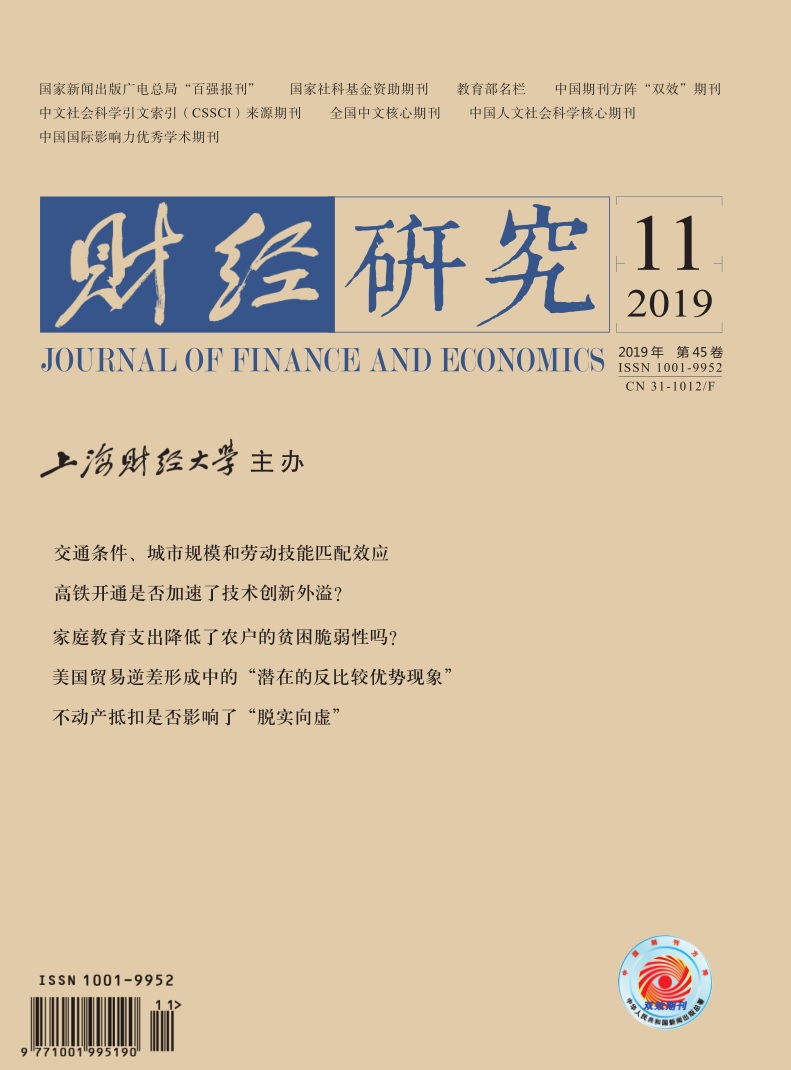文章以马歇尔−勒纳条件为理论基础,以美国指责他国操纵汇率为研究背景,以2010年后美国主要的贸易逆差来源国为研究对象,使用
美国贸易逆差形成中的“潜在的反比较优势现象”——对“汇率操纵逆差说”的反驳
摘要
参考文献
摘要
关键词
2 黄志刚. 加工贸易经济中的汇率传递:一个DSGE模型分析[J]. 金融研究,2009,(11):32−48. DOI:10.3969/j.issn.1674-5477.2009.11.009
3 金洪飞,周继忠. 人民币升值能解决美国对华贸易赤字吗?−基于1994−2005年间月度数据的贸易弹性分析[J]. 财经研究,2007,(4):4−17. DOI:10.3969/j.issn.1001-9952.2007.04.001
6 刘建江. 美国贸易逆差研究[M]. 北京: 北京大学出版社, 2017.
9 周诚君,傅勇,万阿俊. 人民币升值是影响中国出口的主要因素吗−理论与实证研究[J]. 金融研究,2014,(11):1−21. DOI:10.3969/j.issn.1009-3109.2014.11.001
11 Bahmani-Oskooee M,Bolhasani M. How sensitive is U.S.-Canadian trade to the exchange rate:Evidence from industry data[J]. Open Economies Review,2011,22(1): 53−91. DOI:10.1007/s11079-009-9127-7
12 Bergsten C F, Gagnon J E. Currency manipulation, the US economy, and the global economic order[R]. Peterson Institute for International Economics Policy Brief No.PB12-25, 2012.
13 Chinn M D,Ito H. Global current account imbalances:American fiscal policy versus East Asian savings[J]. Review of International Economics,2008,16(3): 479−498. DOI:10.1111/roie.2008.16.issue-3
14 Goldstein M,Lardy N. China’s exchange rate policy dilemma[J]. American Economic Review,2006,96(2): 422−426. DOI:10.1257/000282806777212512
15 Mohsen B O,Brooks T J. Cointegration approach to estimating bilateral trade elasticities between U.S. and her trading partners[J]. International Economic Journal,1999,13(4): 119−128. DOI:10.1080/10168739900000048
16 Rose A K. The role of exchange rates in a popular model of international trade:Does the ‘Marshall-Lerner’ condition hold?[J]. Journal of International Economics,1991,30(3−4): 301−316. DOI:10.1016/0022-1996(91)90024-Z
引用本文
丁剑平, 刘璐, 张冲. 美国贸易逆差形成中的“潜在的反比较优势现象”——对“汇率操纵逆差说”的反驳[J]. 财经研究, 2019, 45(11): 83-96.
导出参考文献,格式为:
下一篇:产业数字化的技术创新效应





 6047
6047  7709
7709

